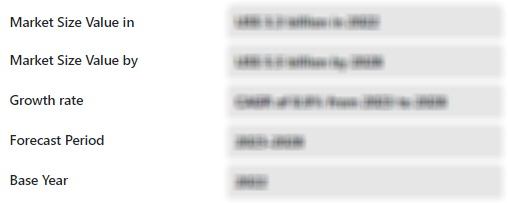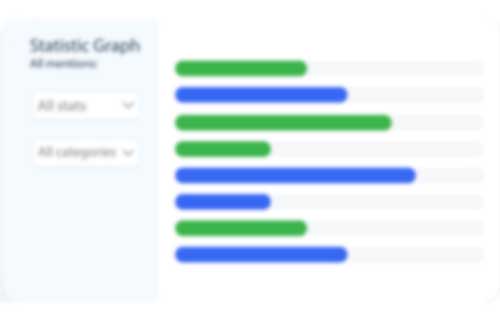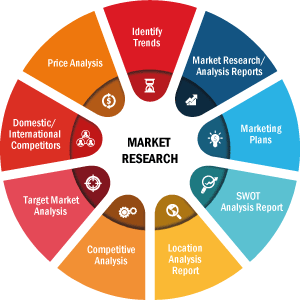The Global Adtech market size was valued at US$ 828.60 billion in 2024 and is expected to reach US$ 1863.91 billion by 2031. The Adtech market is estimated to record a CAGR of 14.5% from 2025 to 2031. The integration of AI within Adtech solutions is likely to remain a key trend in the market.
Adtech Market Analysis
Several key business drivers are propelling the AdTech (Advertising Technology) market. Foremost is the rise of data-driven marketing, as companies leverage big data and AI to deliver personalized, measurable advertising experiences. The proliferation of digital media consumption, especially via mobile and connected devices, has expanded the inventory and targeting capabilities for advertisers, fueling demand for real-time bidding (RTB), programmatic advertising, and cross-platform solutions. Moreover, the shift toward performance-based advertising models—such as cost-per-click (CPC) and cost-per-acquisition (CPA)—is compelling businesses to adopt AdTech platforms for enhanced ROI tracking. Growing investments in omnichannel marketing and customer journey analytics are further encouraging the adoption of integrated AdTech stacks that consolidate data from multiple touchpoints. The expansion of e-commerce and direct-to-consumer (DTC) brands also contributes, as these players rely heavily on precision targeting and audience segmentation to compete effectively. Additionally, regulatory pressure (e.g., GDPR, CCPA) is driving the development of privacy-first AdTech solutions, which build trust and ensure compliance.
Adtech Market Overview
Adtech refers to the digital tools, platforms, and software used by businesses to plan, execute, manage, and analyze advertising campaigns across various channels. It encompasses technologies such as demand-side platforms (DSPs), data management platforms (DMPs), supply-side platforms (SSPs), ad exchanges, and programmatic advertising solutions. These tools enable companies to deliver personalized, data-driven ads to targeted audiences at scale, improving campaign efficiency and return on investment (ROI). In today's competitive digital landscape, AdTech plays a pivotal role in helping marketers reach the right consumer at the right time with the right message. It leverages data analytics, machine learning, and automation to optimize ad spend, enhance targeting accuracy, and measure performance in real-time. Businesses use AdTech to manage advertising across websites, mobile apps, social media, connected TV (CTV), and more. With increasing consumer expectations and fragmented media consumption, AdTech allows for a unified, omnichannel marketing approach. It also supports compliance with privacy regulations like GDPR and CCPA through consent management and contextual targeting. Ultimately, AdTech transforms advertising from a manual, guess-based activity into a data-centric strategy that drives measurable business outcomes through greater personalization, scale, and operational efficiency.
Strategic Insights
Adtech Market Drivers and Opportunities
Growth in Digital Media Consumption to Favor Market
The surge in digital media consumption is a pivotal driver of growth in the AdTech market, fundamentally reshaping how brands engage with consumers. With the global proliferation of smartphones, high-speed internet, and connected devices, consumers are spending significantly more time on digital platforms, ranging from social media and streaming services to news websites and mobile apps. This behavioural shift has created a vast, always-on digital ecosystem that offers advertisers a continuous stream of touchpoints to connect with their target audiences. For businesses, this translates into a substantial increase in digital ad inventory across multiple channels, including display, video, in-app, and connected TV (CTV). As traditional media channels like print and broadcast decline, digital platforms provide measurable, scalable, and highly interactive advertising environments. The ability to reach consumers in real time, often based on contextual or behavioral data, enhances both engagement and conversion potential.
Growing Demand for Personalized Advertising
The rising demand for personalized advertising is a major force driving investment in AdTech, as businesses seek to enhance relevance, engagement, and return on ad spend (ROAS). In an increasingly saturated digital environment, generic advertising no longer resonates with consumers. Instead, brands are turning to data-driven personalization strategies to deliver tailored messages that align with individual user preferences, behaviors, demographics, and purchase intent. AdTech platforms enable this level of precision by leveraging first-party and third-party data, artificial intelligence, and real-time analytics. Through tools such as data management platforms (DMPs) and customer data platforms (CDPs), advertisers can build detailed user profiles and segment audiences with granular accuracy. This allows businesses to deliver hyper-targeted content across channels, whether it’s a product recommendation on social media or a personalized video ad on a streaming platform.
Adtech Market Report Segmentation Analysis
Key segments that contributed to the derivation of the Adtech market analysis are solution, advertising type, enterprise size, and vertical.
- Based on the solution, the market is segmented into Demand-Side Platforms (DSPs), Supply-Side Platforms (SSPs), Ad Networks, Data Management Platforms (DMPs), and Others.
- On the basis of advertising type, the market is segmented into Programmatic, Search, Display, Mobile, Email, Native, and Others.
- Based on enterprise size, the market is bifurcated into SMEs and Large Enterprises.
- Based on the vertical, the market is segmented into BFSI, Media and Entertainment, Education, Retail and Consumer Goods, IT & Telecom, Healthcare, and Others.
Adtech Market Share Analysis by Geography
The geographic scope of the Adtech market report is mainly divided into five regions: North America, Europe, Asia Pacific, Middle East and Africa, South and Central America.
North America dominated the market in 2024. The AdTech market in North America is experiencing robust growth, driven by a combination of technological advancements, mature digital infrastructure, and evolving consumer behavior. One of the primary drivers is the region’s high internet and smartphone penetration, which has created a digitally savvy audience consuming content across various platforms such as social media, streaming services, websites, and mobile apps. This omnichannel environment enables advertisers to engage users at multiple touchpoints, increasing the demand for programmatic and cross-platform AdTech solutions. Additionally, North America hosts many of the world’s leading AdTech companies, including Google, Meta, Amazon, and The Trade Desk, fostering a highly innovative and competitive landscape. These firms continuously push the boundaries of data-driven advertising, machine learning, and real-time bidding (RTB), encouraging widespread industry adoption. Businesses are also motivated by the need for advanced targeting and measurable ROI, making tools like data management platforms (DMPs), demand-side platforms (DSPs), and customer data platforms (CDPs) critical. Furthermore, the shift toward privacy-first advertising in response to regulations like the California Consumer Privacy Act (CCPA) has led to increased investment in consent-based and contextual advertising technologies.
Adtech Market Report Scope
Adtech Market News and Recent Developments
The Adtech market is evaluated by gathering qualitative and quantitative data post primary and secondary research, which includes important corporate publications, association data, and databases. A few of the developments in the Adtech market are listed below:
- Spyrosoft Group, a leading consulting and software development company, announced the launch of Spyrosoft Ad tech, a new entity focused on building custom advertising and marketing software. The software development services offered by Spyrosoft Ad tech will allow Ad tech & Martech vendors, agencies, publishers, media and entertainment companies, retailers and telcos to build innovative and high-performance technology platforms to power and grow their advertising and marketing businesses. (Source: Spyrosoft Group, Press Release, May 2025)
- Mediaocean, the foundational partner for omnichannel advertising, announced that Innovid is the official name for its global ad tech business, following the merger with Flashtalking. Additionally, the company introduced a new brand identity for Innovid to signal its core tenets of independence, intelligence, and innovation. This milestone cements Innovid as the industry’s most powerful AI-driven omnichannel advertising platform, delivering a seamless solution for creative, delivery, measurement, and optimization. (Source: Mediaocean, Press Release, March 2025)
Adtech Market Report Coverage and Deliverables
The “Adtech Market Size and Forecast (2021–2031)” report provides a detailed analysis of the market covering below areas:
- Adtech market size and forecast at global, regional, and country levels for all the key market segments covered under the scope
- Adtech market trends as well as market dynamics such as drivers, restraints, and key opportunities
- Detailed PEST/Porter’s Five Forces and SWOT analysis
- Adtech market analysis covering key market trends, global and regional framework, major players, regulations, and recent market developments
- Industry landscape and competition analysis covering market concentration, heat map analysis, prominent players, and recent developments for the Adtech market
- Detailed company profiles

Have a question?

Naveen
Naveen will walk you through a 15-minute call to present the report’s content and answer all queries if you have any.
 Speak to Analyst
Speak to Analyst
- Sample PDF showcases the content structure and the nature of the information with qualitative and quantitative analysis.
- Request discounts available for Start-Ups & Universities
- Sample PDF showcases the content structure and the nature of the information with qualitative and quantitative analysis.
- Request discounts available for Start-Ups & Universities

Report Coverage
Revenue forecast, Company Analysis, Industry landscape, Growth factors, and Trends

Segment Covered
This text is related
to segments covered.

Regional Scope
North America, Europe, Asia Pacific, Middle East & Africa, South & Central America

Country Scope
This text is related
to country scope.
Frequently Asked Questions
North America dominated the Adtech market in 2024.
The market is expected to grow at a CAGR of 14.5% over the forecast period.
The integration of AI within adtech solutions is likely to remain a key trend in the market.
The growth in digital media consumption and the growing demand for personalized advertising are the major factors driving the market.
Google, Meta (formerly Facebook), Amazon, Adobe, and The Trade Desk Inc. are among the leading players in the Adtech market.
The estimated value of the Adtech market is expected to reach US$ 1863.91 billion by 2031.
Yes! We provide a free sample of the report, which includes Report Scope (Table of Contents), report structure, and selected insights to help you assess the value of the full report. Please click on the "Download Sample" button or contact us to receive your copy.
Absolutely - analyst assistance is part of the package. You can connect with our analyst post-purchase to clarify report insights, methodology or discuss how the findings apply to your business needs.
Once your order is successfully placed, you will receive a confirmation email along with your invoice.
• For published reports: You'll receive access to the report within 4-6 working hours via a secured email sent to your email.
• For upcoming reports: Your order will be recorded as a pre-booking. Our team will share the estimated release date and keep you informed of any updates. As soon as the report is published, it will be delivered to your registered email.
We offer customization options to align the report with your specific objectives. Whether you need deeper insights into a particular region, industry segment, competitor analysis, or data cut, our research team can tailor the report accordingly. Please share your requirements with us, and we'll be happy to provide a customized proposal or scope.
The report is available in either PDF format or as an Excel dataset, depending on the license you choose.
The PDF version provides the full analysis and visuals in a ready-to-read format. The Excel dataset includes all underlying data tables for easy manipulation and further analysis.
Please review the license options at checkout or contact us to confirm which formats are included with your purchase.
Our payment process is fully secure and PCI-DSS compliant.
We use trusted and encrypted payment gateways to ensure that all transactions are protected with industry-standard SSL encryption. Your payment details are never stored on our servers and are handled securely by certified third-party processors.
You can make your purchase with confidence, knowing your personal and financial information is safe with us.
Yes, we do offer special pricing for bulk purchases.
If you're interested in purchasing multiple reports, we're happy to provide a customized bundle offer or volume-based discount tailored to your needs. Please contact our sales team with the list of reports you're considering, and we'll share a personalized quote.
Yes, absolutely.
Our team is available to help you make an informed decision. Whether you have questions about the report's scope, methodology, customization options, or which license suits you best, we're here to assist. Please reach out to us at sales@theinsightpartners.com, and one of our representatives will get in touch promptly.
Yes, a billing invoice will be automatically generated and sent to your registered email upon successful completion of your purchase.
If you need the invoice in a specific format or require additional details (such as company name, GST, or VAT information), feel free to contact us, and we'll be happy to assist.
Yes, certainly.
If you encounter any difficulties accessing or receiving your report, our support team is ready to assist you. Simply reach out to us via email or live chat with your order information, and we'll ensure the issue is resolved quickly so you can access your report without interruption.
The Insight Partners performs research in 4 major stages: Data Collection & Secondary Research, Primary Research, Data Analysis and Data Triangulation & Final Review.
- Data Collection and Secondary Research:
As a market research and consulting firm operating from a decade, we have published many reports and advised several clients across the globe. First step for any study will start with an assessment of currently available data and insights from existing reports. Further, historical and current market information is collected from Investor Presentations, Annual Reports, SEC Filings, etc., and other information related to company’s performance and market positioning are gathered from Paid Databases (Factiva, Hoovers, and Reuters) and various other publications available in public domain.
Several associations trade associates, technical forums, institutes, societies and organizations are accessed to gain technical as well as market related insights through their publications such as research papers, blogs and press releases related to the studies are referred to get cues about the market. Further, white papers, journals, magazines, and other news articles published in the last 3 years are scrutinized and analyzed to understand the current market trends.
- Primary Research:
The primarily interview analysis comprise of data obtained from industry participants interview and answers to survey questions gathered by in-house primary team.
For primary research, interviews are conducted with industry experts/CEOs/Marketing Managers/Sales Managers/VPs/Subject Matter Experts from both demand and supply side to get a 360-degree view of the market. The primary team conducts several interviews based on the complexity of the markets to understand the various market trends and dynamics which makes research more credible and precise.
A typical research interview fulfils the following functions:
- Provides first-hand information on the market size, market trends, growth trends, competitive landscape, and outlook
- Validates and strengthens in-house secondary research findings
- Develops the analysis team’s expertise and market understanding
Primary research involves email interactions and telephone interviews for each market, category, segment, and sub-segment across geographies. The participants who typically take part in such a process include, but are not limited to:
- Industry participants: VPs, business development managers, market intelligence managers and national sales managers
- Outside experts: Valuation experts, research analysts and key opinion leaders specializing in the electronics and semiconductor industry.
Below is the breakup of our primary respondents by company, designation, and region:

Once we receive the confirmation from primary research sources or primary respondents, we finalize the base year market estimation and forecast the data as per the macroeconomic and microeconomic factors assessed during data collection.
- Data Analysis:
Once data is validated through both secondary as well as primary respondents, we finalize the market estimations by hypothesis formulation and factor analysis at regional and country level.
- 3.1 Macro-Economic Factor Analysis:
We analyse macroeconomic indicators such the gross domestic product (GDP), increase in the demand for goods and services across industries, technological advancement, regional economic growth, governmental policies, the influence of COVID-19, PEST analysis, and other aspects. This analysis aids in setting benchmarks for various nations/regions and approximating market splits. Additionally, the general trend of the aforementioned components aid in determining the market's development possibilities.
- 3.2 Country Level Data:
Various factors that are especially aligned to the country are taken into account to determine the market size for a certain area and country, including the presence of vendors, such as headquarters and offices, the country's GDP, demand patterns, and industry growth. To comprehend the market dynamics for the nation, a number of growth variables, inhibitors, application areas, and current market trends are researched. The aforementioned elements aid in determining the country's overall market's growth potential.
- 3.3 Company Profile:
The “Table of Contents” is formulated by listing and analyzing more than 25 - 30 companies operating in the market ecosystem across geographies. However, we profile only 10 companies as a standard practice in our syndicate reports. These 10 companies comprise leading, emerging, and regional players. Nonetheless, our analysis is not restricted to the 10 listed companies, we also analyze other companies present in the market to develop a holistic view and understand the prevailing trends. The “Company Profiles” section in the report covers key facts, business description, products & services, financial information, SWOT analysis, and key developments. The financial information presented is extracted from the annual reports and official documents of the publicly listed companies. Upon collecting the information for the sections of respective companies, we verify them via various primary sources and then compile the data in respective company profiles. The company level information helps us in deriving the base number as well as in forecasting the market size.
- 3.4 Developing Base Number:
Aggregation of sales statistics (2020-2022) and macro-economic factor, and other secondary and primary research insights are utilized to arrive at base number and related market shares for 2022. The data gaps are identified in this step and relevant market data is analyzed, collected from paid primary interviews or databases. On finalizing the base year market size, forecasts are developed on the basis of macro-economic, industry and market growth factors and company level analysis.
- Data Triangulation and Final Review:
The market findings and base year market size calculations are validated from supply as well as demand side. Demand side validations are based on macro-economic factor analysis and benchmarks for respective regions and countries. In case of supply side validations, revenues of major companies are estimated (in case not available) based on industry benchmark, approximate number of employees, product portfolio, and primary interviews revenues are gathered. Further revenue from target product/service segment is assessed to avoid overshooting of market statistics. In case of heavy deviations between supply and demand side values, all thes steps are repeated to achieve synchronization.
We follow an iterative model, wherein we share our research findings with Subject Matter Experts (SME’s) and Key Opinion Leaders (KOLs) until consensus view of the market is not formulated – this model negates any drastic deviation in the opinions of experts. Only validated and universally acceptable research findings are quoted in our reports.
We have important check points that we use to validate our research findings – which we call – data triangulation, where we validate the information, we generate from secondary sources with primary interviews and then we re-validate with our internal data bases and Subject matter experts. This comprehensive model enables us to deliver high quality, reliable data in shortest possible time.





 Get Free Sample For
Get Free Sample For